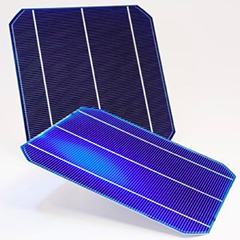Leuven (Belgium) – September 27, 2013 – At next week’s European Photovoltaic Solar Energy Conference and Exhibition (EUPVSEC, Paris), the Belgian nanoelectronics research center imec, RENA, a leading supplier for wet chemical production tools, and SoLayTec, a supplier of Al2O3 deposition tools, present thin (160μm), large area (156x156mm2) industrial PERC-type silicon solar cells achieving a best cell efficiency of 20.1% using atomic layer deposition (ALD) Al2O3 passivation and standard screen printed contacts.
The i-PERC-type silicon solar cells have been manufactured on imec’s silicon solar cell pre-pilot line using RENA’s InPilot tool for rear-side polishing and emitter removal, and SoLayTec’s spatial ALD tool for Al2O3 deposition. These cells reached a best cell conversion efficiency of 20.1% and open circuit voltages up to 655 mV. When applying Cu-plated contacts at the front instead of silver screen printed contacts, a top efficiency of 20.6% was reached.
“Routinely achieving average conversion efficiencies around 20%, imec’s industrial PERC pre- pilot line enables the development and validation of novel solar cell processes and concepts, and serves as an excellent platform for system suppliers to benchmark their new tools,” states Dr. Joachim John, Photovoltaic R&D projects responsible at imec. “This supports the acceleration of process implementation in next generation high-throughput solar cell manufacturing.”
Roger Gortzen, Manager marketing and sales and co-founder of SoLayTec: “Achieving a factor 3 less TMA precursor usage without effecting the cell efficiency on imec’s silicon PV processing facilities proves that our novel ALD Al2O3 passivation process, aiming at lower cost of ownership (< 2€ct/layer) without effecting the cell efficiency, is ready to be implemented in an industrial environment.”
Franck Delahaye, Product manager solar at RENA: “Collaborating at imec with partners across the value chain enables us to benchmark our tools on the highest performance levels. This way, we can verify the impact of our single tools on the overall cell performance and make sure to offer solutions with a strong positive leverage on the costs per watt. Further, this deepens our understanding of the respective interaction between the process steps and strengthens our ability to support and lead overall process integration at our customer’s facilities.”



























